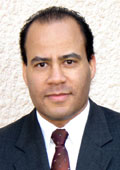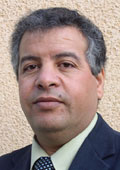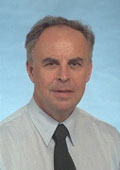
October 12th - 14th 2005, Grenoble, FRANCE
Session 1 - RFID technology
|
||||||||||||||||||||||||||||||||||||||||||||||||||||||||||||||||||||||||||||||||||||||||||||||||||||||||||||
| Organizer | Joel DANSOU-ELOY "Introduction to the special session on RFID technology" (IMEP/INPG - France) |
| Target Speaker | Dominique PARET "Technical State of Art of Radio Frequency Identification - RFID and implications regarding standardization, regulations, human exposure, privacy" (Philips Semiconductors - France) |
| Paper 1 | François VACHERAND "New Technologies for Contactless Microsystems" (CEA/LETI - France) |
| Paper 2 | Smail TEDJINI, Tan-Phu VUONG, Vincent BEROULLE "Antennas for RFID tags" (LCIS/INPG - France) |
| Paper 3 | Raghu DAS "Chip versus chipless for RFID applications" (IDTechEx, UK) |
| Paper 4 | Anne BLAYO, Bernard PINEAUX "Printing processes and their potential for RFID printing" (LGP2/INPG - France) |
Session 2 - Ambient Functionality 
| Organizer | Pekka SILVENNOINEN "Introduction to the special session on Ambient Functionality" (VTT - Finland) |
| Target Speaker | Francis JUTAND "Ambient functionnality : Human interfaces for the digital life" (GET - France) |
| Paper 1 | Pascal ANCEY "Ambient functionality in MIMOSA from technology to services" (STMicroelectronics - France) |
| Paper 2 | Petri VUORINEN "Applying the RFID technology for Filed Force Solution" (Nokia - Finland) |
| Paper 3 | Hughes METRAS "RFID tags for ambient intelligence : present solutions and future challenges" (CEA/LETI - France) |
| Paper 4 | Minoru SEKIGUCHI, Hirohisa NAITO, Akinobu UEDA, Toru OZAKI, Masao YAMASAWA "UBWALL, ubiquitous wall changes an ordinary wall into the smart ambience" (Fujitsu Laboratories Ltd. - Japan) |
| Paper 5 | Eija KAASINEN, Timo TUOMISTO, Pasi VALKKYNEN "Ambient functionality - Use cases" (VTT Information Technology - Finland) |
Session 3 - Everyday robotics : new visions, new challenges 
| Organizer | Frederic KAPLAN "Introduction to the special session on Everyday robotics : new visions, new challenges" (Sony Computer Science Laboratory Paris - France) |
| Target Speaker | Frederic KAPLAN "Everyday robotics : robots as everyday objects" (Sony Computer Science Laboratory Paris - France) |
| Paper 1 | Lars Eriks HOLMQUIST, Sara LJUNGBLAD "Designing Robot Applications for Everyday Environments" (Viktoria Institute - Sweden) |
| Paper 2 | Patrizia MARTI, Leonardo GUSTI, Alessandro POLLINI, Alessia RULLO "Experiencing the flow : design issues in human-robot interaction" (University of Siena - Italy) |
| Paper 3 | Jean-Christophe BAILLIE "Universal Programming Interfaces for Robotic Devices" (Ecole Nationale Supérieure des Techniques Avancées - France) |
| Paper 4 | Rachid ALAMI, Aurelie CLODIC, Vincent MONTREUIL, Emrah Akin SISBOT, Raja CHATILA "Task planning for Human-Robot Interaction" (LAAS/CNRS - France) |
___________________________________
SESSION 1
RFID technology
___________________________________
___________________________________
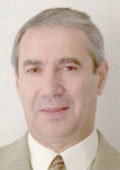 |
Dominique PARET
Graduated Electronic Eng. Breguet/ESIEE + DEA Sciences Paris VI -
University, Dominique started his carrier as Consumer Application Labs -
TV Group Leader in RTC - Compelec (several patents in analogue and digital
fields). Now, for fifteen years, he is working in the "Innovation and Emerging
Business" Philips Semiconductors BL as Technical Support Mgr dealing mainly
on two leading edge subjects : |
Abstract of the intervention : Technical State of Art of "Radio Frequency Identification - RFID" and implications regarding standardization, regulations, human exposure, privacyStarting from near and far electromagnetic field theory, the conference introduces the main principles used in Radio Frequency Identification - RFID i.e. inductive coupling or propagation using backscattering principle (batteryless / battery assisted) from LF 125 kHz up to SHF 5,8 GHz.We will continue by introducing the main problems for reception of the small signals coming back from tag load modulations and demodulation mechanics and possible simulations. We will introduce also some new technological points such as Very High Baud Rate possibilities and relations between wafer processing / mounting and global tag cost. We will conclude describing important inter relations between technical ideas, technologies, standardizations, regulations, human exposure, privacy, etc. Download the PDF presentation : presentation n°90 |
|
___________________________________
 |
François VACHERAND
François VACHERAND received his engineer degree in
Electronics from INPG/ENSERG (Institut National Polytechnique de Grenoble
/ Ecole Nationale Supérieure de Radio-Eléctricité de Grenoble) in 1978.
He received his Ph. D. degree in Information Theory and Signal Processing
in 1981 from INPG/ENSIEG for works related to anomalous magnetic dipoles
detection. Since 1982 he has been a research engineer at CEA-LETI Grenoble
France. His main topics of interest are smart cards, RFID electronic tags,
contactless microsystems, smart secure portable objects and digital
communications.
|
Abstract of the intervention : New Technologies for Contactless MicrosystemsThis paper presents some new emerging technological avenues for contactless chips in order to tackle emerging and demanding future specifications. Basically RFID chips will evolve towards new embedded functions such as power, sensing and security.Today, R&D works on future contactless Microsystems can be clustered into four main directions : - Silicon technologies for low power and non volatile memories - Contactless air interfaces - Embedded micro power sources - Embedded micro-sensors Download the PDF presentation : presentation n°88 |
|
___________________________________
___________________________________
 |
Raghu DAS
Raghu Das MA is Managing Director of IDTechEx. He has a BA Natural Sciences
honours degree from Cambridge University, where he read physics, mathematics,
computer science and material science. He gained technical and marketing
experience with RFID when he worked for tag suppliers. At IDTechEx, Raghu is
in charge of the consultancy service and the annual Smart Labels USA conferences.
He has carried out consultancy in America, Europe, the Middle East and East
Asia. He has lectured on RFID, Smart Packaging and Printed Electronics at over
forty global events and is co-author of several IDTechEx publications.
|
Abstract of the intervention : Chip versus chipless for RFID applicationsThe RFID market is expected to reach $7.26Bn in 2008. Raghu Das will provide detailed market forecasts by RFID technology to 2015 with an analysis of the various technologies being implemented today. He will introduce the nine types of chipless RFID technologies. Chipless RFID has the biggest market potential - ultimately replacing every barcode and much more, the ultimate demand being some 10 trillion tags a year. They are usually ultra low cost ranging from 0.1 to 10 cents each, even in modest quantities, but often with limited performance. However, this is something that is constantly changing. On the basis of case histories and company profiles of the many trials and sales successes of chipless RFID, Raghu Das will provide an unbiased assessment of who will be the winners and losers in the shakeout and what the future will bring.Download the PDF presentation : presentation n°84 |
|
___________________________________
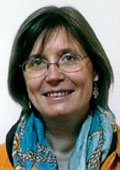 |
Anne BLAYO
Anne Blayo graduated from the French Engineering School of Papermaking
and Printing in 1988 and received her Ph.D. at the National Polytechnique
Institute of Grenoble in 1994. Her thesis concerned rheological properties
of printing inks. Since then, she has been working in the French Engineering
School of Papermaking and Printing (EFPG) as a teacher and researcher.
Her work is focused on printing inks (chemical composition, physico-chemical
and rheological properties) and color-related studies.
|
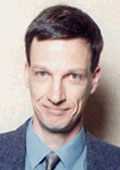 |
Bernard PINEAUXBernard Pineaux is Head of Studies at the French Engineering School of Paper and Printing (EFPG), based in Grenoble, France, and part of the National Polytechnical Institute of Grenoble (INPG). He owns an engineering degree in Printing from EFPG, a Master of Science in Printing Technology rom the Rochester Institute of Technology, and a Ph.D in Process Engineering from INPG. His research activities deal with the offset printing process as well as printability. He has been serving on the TAGA (Technical Association of the Graphic Arts) board of Directors for 4 years. |
Abstract of the intervention : Printing processes and their potential for RFID printingThis paper explains the basics of a number of printing processes (offset lithography, gravure, flexography, ink jet, electrophotography and screen printing). Characteristics such as the process principles, the type of inks and substrates used, the resolution, but also the limitations of these processes (in terms of regularity, for instance) are tackled. Then, their potential for RFID printing is addressed.Download the PDF presentation : presentation n°89 |
|
___________________________________
SESSION 2
Ambient functionality
___________________________________
___________________________________
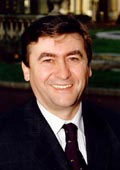 |
Francis JUTAND
Francis Jutand joined in july 2005 the Scientific Direction of GET, a
french research and teaching organism in the field of telecommunication.
He has been before at the head of the Science and Technology of Information
and Communication Department of CNRS created in 2000. He has served before
since 1996 as Scientific Director of the R&D center of France Telecom. As
head of the Electonics Department of ENST he founded a succesful VLSI labs
in 1981 involved in image,data processing and CAD. He is also Deputy
President of the French-Finnish association for science and technology.
|
Abstract of the intervention : Ambient functionnality : Human interfaces for the digital lifeHow to use the power of digital technologies to create new contents, to better communicate, and to access and produce knowledges. First efforts have been done on ubiquity and language processing. Progresses in process on sensitive and perceptive interfaces open the way to a kind of a new information and communication exented human environment, that is going to be more and more entangled with the development of new abilities to exchange, cooperate, and learn. Beyond the revolution of internet, what are going to be the most important evolutions based on new ambient functionnalities, affordable, acceptable and disruptive for the future. Combining technical, usage and prospective points of views, the "target speak" is aiming at bringing some materials to open research tracks and experiments in that field.Download the PDF presentation : presentation n°91 |
|
___________________________________
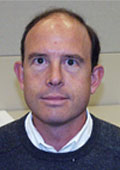 |
Pascal ANCEY
Pascal Ancey, received the M.S degree from INSA in 1990 and the PhD degree
in microelectronics, in 1997, from University of Paris 7. In 1991, he
joined the IMRA Research Centre as R&D engineer to develop thermoelectric
material and thermal oscillator. From 1996 to 1999, he became responsible
of the thermo-mechanics team where he was involved in the development of
sensors for automotive applications. Since 2000, he joined STMicroelectronics
- Front-end Technology Manufacturing group where he manage the advanced R&D
team "Above IC" in the field of Passive & RFMEMS. He is the coordinator of
the FP5 European project MARTINA related to above IC FBAR resonator and
filter and he is the technical manager of the FP6 European Integrated
Project MIMOSA.
|
Abstract of the intervention : Ambient functionality in MIMOSA from technology to servicesThe MIcrosystems platform for MObile Services and Applications (MIMOSA) is an European Integrated Project in the Information Society Technology (IST) priority. The goal of MIMOSA is to make Ambient Intelligence (AmI) a reality by developing a mobile-phone centric open technology platform. In MIMOSA vision, personal mobile devices act as the principal gateway to AmI. The technology platform consists of the present telecommunication technology platform augmented with the following new key building blocks : wireless sensors exploiting the RFID technology, highly integrated readers/writers for RFID tags and sensors, MEMSbased RF components and modules, low-power short-range radios, advanced integration technology and novel MEMS sensors for context sensitivity and intuitive user interfaces. In MIMOSA vision, the user feels and really is in control of AmI. AmI applications help people in their everyday life: the applications are useful, usable, reliable, and ethical issues have been taken into account in the design.Other(s) Author(s) : Leonardo GUSTI Download the PDF presentation : presentation n°92 |
|
___________________________________
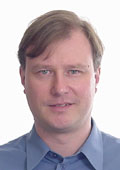 |
Petri VUORINEN
I work as a Program Manager in Venture within Nokia that is
focusing on Near Field communication and solution(s) for
Field Force personnel. My area of responsibility is merely
the Server Middleware.
|
Abstract of the intervention : Applying the RFID technology for Field Force SolutionThe RFID technology has been applied for a long time in different areas: In logistics to identify the goods in transit, in security business for creating the check points for guarding tours.However RFID technology has merely been applied in such way that the content of the RFID tag has been read with the dedicated reader device that has no real time connectivity to the back end systems where the data of the RFID TAGs is collected to. Or there has not been possibility to combine the mobile phone.s functionalities with the RFID reader (integrated device) that would also have an intuitive User Interface based on simple .Touch. This paper introduces, as an example, the reporting and communication tool called Field Force Solution. It is intended for people working in the field and who are by nature mobile and blue collar. It uniquely combines the use of RFID technology with tags and readers, client - server middleware software, mobile phone and real time communication. Download the PDF presentation : presentation n°6 |
|
___________________________________
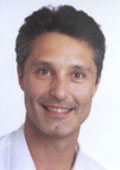 |
Hughes METRAS
Hughes Metras is program manager at leti in the field of smart devices and
smart cards. He benefits from a technical background in Physics engineering
and from an MBA from the University of Miami. After 4 years spent in the
marketing office of Leti where he contributed to strategic analysis of new
market opportunities in the field of microsensors, smart tags and smart
devices and 4 years as manager of the same team, Hughes joined the program
team of Leti in 2003 where he is setting up new initiatives in the field of
smart cards, RFID and wireless sensor networks. He has been involved in the
preparation of the EC project Mimosa, the Medea+ project SWANS, as well as
the French Finnish Adamos project focusing on context aware services design
with user centric approach.
|
Abstract of the intervention : RFID tags for ambient intelligence : present solutions and future challengesThe present paper aims at delivering a broad overview of current state of the art technologies in the field of RFID including standardization issues. On that basis the potential use of RFID in ambient intelligence (AmI) scenarios will be discussed highlighting the two main visions and paradigms that are proposed in the field: one concentrates all the information on centralized or distributed data servers that are accessed through web services pointed by the URL addresses stored in the tags read by the user; the other is built on the use of tags or sensors as a media to gather information in the close environment of the user in order to enrich its experience. Finally, we will have a look at the various tag functionalities and performances that need improvements to meet AmI requirements and we will discuss the associated research and technology development challenges.Download the PDF presentation : presentation n°83 |
|
___________________________________
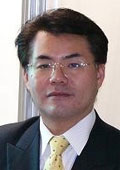 |
Minoru SEKIGUCHI
Minoru Sekiguchi is a Research Fellow of Fujitsu Laboratories Ltd. He
engaged in mechanical engineers, artificial intelligence and robotics. And
he is now in charge of research for the Ubiquitous Computing and it's
application in retails. He obtained bachelor degree of Mechanical Engineers
from Tohoku University.
|
Abstract of the intervention : "UBWALL", ubiquitous wall changes an ordinary wall into the smart ambienceThis paper describes how smart ambience improves information services. For information services in a public space, UBWALL is developed named after "ubiquitous wall", which has a large display and eight-series of built-in RFID reader/writer so that people can get individual information appropriately by using IC cards (RFID cards) or mobile terminals. UBWALL is usually installed in a public space for the purpose of advertisements or directory services, where people can see both the public and personalized information at a time identifying user profile by touching with RFID cards. UBWALL was exhibited in several exhibitions and we confirmed its effectiveness and availability as a new system for information services.Other(s) Author(s) : Hirohisa NAITO, Akinobu UEDA, Toru OZAKI, Masao YAMASAWA Download the PDF presentation : presentation n°13 |
|
___________________________________
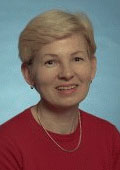 |
Eija KAASINEN
Eija Kaasinen is in charge of the Human-Centred Design research group at
VTT Information Technology. Her research interests include usability,
user acceptance, human-centred design methodology as well as mobile
services, context-awareness and personalisation. She is currently
working in MIMOSA (MIcrosystems platform for MObile Services and
Applications) project, leading human-centred design activities in the
project. MIMOSA is an integrated project studying Ambient Intelligence
components and applications in the Information Society Technologies
priority of the European Sixth Framework Research Programme.
|
Abstract of the intervention : Ambient functionality - Use casesIn this paper we describe use cases and user requirements for ambient intelligence applications on personal mobile devices. Wireless connections to tags and sensors provide mobile applications with different identification, measurement and context data. Mobile applications that utilise local connectivity share many common patterns. We have identified these common patterns and describe them as use cases related to physical selection, activating applications, sensing and context-awareness. Based on user and expert evaluations of usage scenarios we also present user requirements for the use cases.Other(s) Author(s) : Timo TUOMISTO, Pasi VALKKYNEN Download the PDF presentation : presentation n°52 |
|
___________________________________
SESSION 3
Everyday robotics : new visions, new challenges
___________________________________
 |
Frédéric KAPLAN
Frédéric Kaplan has a PhD in artificial intelligence and
is a permanent researcher at the Sony Computer Science Laboratory (CSL) in
Paris. Since 1997, he works with Sony Japanese teams at the conception of
new prototypes of entertainment robots. These robots are endowed with learning
abilities enabling them to develop autonomously, in a way similar to a
young animal that discovers its environment. In parallel with his research
in artificial intelligence, Frédéric Kaplan studies the psychological,
sociological and ethical challenges bounded to the diffusion of such devices
in society. His pluridisciplinary researches have been published in various
scientific domains : robotics, neurosciences, complex systems , ethology
and linguistics.
|
Abstract of the intervention : Introduction to the special sesssion on "Everyday robotics : new visions, new challenges"The field of everyday robotics is concerned with inventing new forms of robotic objects for everyday use. These range from service robot companion meant to enhance and extend the individuals own ability to perform crucial tasks to entertainment devices designed to be interesting for their own sake.Beyond technical challenges, research in Everyday Robotics insists on the importance of understanding the future shape of our daily interactions with robotic objects. In order to do so, one should not think only in terms of potential applications, but in terms of potential experienced and ecological value. What could make a robot sufficiently valuable so that it could become an everyday object? What kind of relevant interrelation could such an object bootstrap with other entities present in our daily environments? For a long time, robots have been designed and evaluated as independent autonomous entities. In order to draw a more accurate picture of our possible future life with robots, it is crucial to consider robots not in isolation but as entities situated in various technological, social and cultural environments: robots as objects we can relate with, robots as objects that can relate with one another, robots as a nodes in a web of other technological devices. The "shape of things to come" is open to our imagination. Robotic objects of the near future are likely to be different from the robots pictured in science-fiction: Ubiquitous technologies, smart materials and new artificial intelligence techniques inspired by progresses in cognitive science permit to envision new forms of interactions and new research questions. |
|
Abstract of the intervention : Everyday robotics : robots as everyday objectsWhy are we not living yet with robots? If robots are not common everyday objects, it is maybe because we have looked for robotic applications without considering with sufficient attention what could be the experience of interacting with a robot. This article introduces the idea of a value profile, a notion intended to capture the general evolution of our experience with different kinds of objects. After discussing value profiles of commonly used objects, it offers a rapid outline of the challenging issues that must be investigated concerning immediate, short-term and long-term experience with robots. Beyond science-fiction classical archetypes, the picture emerging from this analysis is the one of versatile everyday robots, autonomously developing in interaction with humans, communicating with one another, changing shape and body in order to be adapted to their various context of use. To become everyday objects, robots will not necessary have to be useful, but they will have to be at the origins of radically new forms of experiences.Download the PDF presentation : presentation n°39 |
|
___________________________________
 |
Lars Eriks HOLMQUIST
Lars Erik Holmquist is leader of the Future Applications
Lab at the Viktoria Institute in Göteborg, Sweden. Before this, he founded
and led the PLAY research group from 1997-2001. He received his master's
degree in Computer Science in 1996, and his Ph.D. in Informatics in 2000,
both at the Göteborg University. His research interests include human-computer
interaction, information visualization and ubiquitous computing. He has
been member of many international conference committees and published
extensively in these research fields. In 2002 he chaired the international
conference on ubiquitous computing, UbiComp 2002, which attracted almost 500
visitors from companies, universities and research institutes all over the
world. He is an associate editor of the Springer journal Personal and
Ubiquitous Computing. |
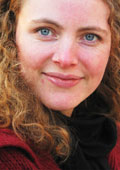 |
Sara LJUNGBLADSara Ljungblad is a research assistant at the Future Applications Lab, at the Viktoria Institute in Göteborg, Sweden. She is involved in ubiquitous computing projects with a user-centred and multidisciplinary design approach. Sara's research interest is to integrate information technology in our everyday surroundings, beyond interaction with desktop computers and current mobile devices. She wants to investigate alternative computation for everyday life, in order to make living more enjoyable and interesting. Sara co-organised the workshop "Designing robot applications for everyday use" at the Viktoria Institute in January 2005. She has a B.Sc. in Cognitive Science, a M.Sc in Informatics and is currently a Ph.D. student in Informatics at the University of Göteborg, Sweden. |
Abstract of the intervention : Designing robot applications for everyday environmentsWe report from the workshop "Designing robot applications for everyday use". This event gathered robot researchers and interaction designers from several countries in order to push robot application domains in novel directions. This article presents the methods we used for breaking out of limited views of robots, and our process for refining ideas to more realistic product opportunities. Based on the results of the workshop, we discuss current challenges of extending the design space of novel robot product ideas.Download the PDF presentation : presentation n°45 |
|
___________________________________
 |
Alessia RULLO
Alessia Rullo is a Ph.D. student in Telematics and Information Society
at Informatics Engineering Department of the University of Firenze, Italy.
She has been collaborating with the Department of Communication Science of
the University of Siena since the beginning of 2004. She obtained her master
degree in 2003 with a thesis on robotic artefacts to support emotive knowledge,
development and sharing. She collaborates in PalCom, an integrated project
in the 6th Framework Programme under the proactive initiative Disappearing
Computer in Future and Emerging Technologies (FET), part of the Information
Society Technologies.
|
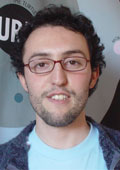 |
Alessandro POLLINIAlessandro Pollini is a Ph.D. student in Telematics and Information Society at Informatics Engineering Department of the University of Firenze, Italy. He has been collaborating with the Department of Communication Science of the University of Siena, Italy since May, 2004. He obtained his master degree in April, 2004 with a thesis on robotics in cognitive rehabilitation, an experimental and theoretical work on Theory of Mind. He's collaborating in PalCom, an integrated project in the 6th Framework Programme under the proactive initiative Disappearing Computer in Future and Emerging Technologies (FET), part of the Information Society Technologies. |
 |
Patrizia MARTIPatrizia Marti is assistant professor of Education Technologies at the Communication Science Department of the Siena University (Italy). She is involved in international projects in the areas of educational technologies, robotics and health care. Her current research interests include the design of human activities in context (situated interaction) taking into account the multi-sensorial, emotional and socio-cultural aspects of the interaction with artefacts. She published more than 50 papers in conferences, peer reviewed journals, and chapters in books. She was also editor of special issues in journals like Cognition, Technology and Work and Travail Humain. |
Abstract of the intervention : Experiencing the flow : design issues in human-robot interactionThe experience of "emotional tuning" with artefacts that are not merely static (a teapot), nor merely reactive (a VCR), but that are autonomous, physical objects with decision-making abilities, pro-active, dynamic and designed with the general purpose of engaging users in social interaction, is an intriguing issue for interaction design.This paper is a reflection about the compelling yet difficult nature of interaction dynamics among humans and robots, and a special category among them: robots capable of mediating social interaction. Supporting such experiences means providing intensive embedding in the situation, motivating the users through a sense of engagement, similarly to what Csikszentmihalyi (1990) defines "optimal flow", the absolute absorption in the activity where the experience is guided by the personal feeling of the external worlds. The objective of our investigation is to analyze and try to understand if and when robotic devices can engage humans in activities likely to result in "being in the flow". We will try to analyze the different dimensions of flow in relation to different kinds of robotic devices: the seal robot Paro, used both for company and for therapeutic activities, the Intelligent Building Blocks, a robotic construction kit often used in educational activities, LEGO Mindstorms, the popular construction kit developed by LEGO. The perspective that will be presented is connected to the quality of interaction and to the personal significance that every human being creates by getting involved and involving its own life experience in the interaction with the robot. Download the PDF presentation : presentation n°12 |
|
___________________________________
 |
Jean-Christophe BAILLIE
Jean-Christophe BAILLIE got his PhD in Artificial Intelligence at LIP6 Paris
in 2001. He spent two years at Sony CSL/Paris working on Artificial Vision.
Since 2002, he is assistant professor at the Ecole Nationale Supérieure des
Techniques Avancées (ENSTA) in Paris where he leads the Cognitive Robotics
group. The group is working with autonomous embodied systems, evolving in
complex and non-constraint environments. One of their main research topic
is the problem of grounding symbols in perception (see the Talking Robots
experiment, inspired by the Sony CSL Talking Heads) in the framework of
developmental robotics. Jean-Christophe Baillie also developed URBI (Universal
Robotic Body Interface), a script language used to control robots.
|
Abstract of the intervention : Universal Programming Interfaces for Robotic DevicesRobotic devices, whether service robots designed to help people or entertainment robots, are more and more widespread, and their number is increasing. All these robots currently have a different programming interface, more or less complex and more or less powerful. The situation is reminding of the 80's and the personal computer revolution: many vendors, models and as many programming languages and interfaces. We have developed URBI, a Universal Robotic Body Interface in an attempt to address this issue and provide a standard and simple way to control robots, while still providing powerful high-level capabilities expected from a modern programming language. To achieve this, URBI is based on a client/server architecture where the server is running on the robot and accessed by the client, typically via TCP/IP. The client can be any system, thus giving a great deal of flexibility. The URBI language is a high level scripted interface language used by the client and capable of controlling the joints of the robot or accessing its sensors, camera, speakers or any accessible part of the machine. We present in this article a short introduction to URBI and show application examples with Aibo. We finally explore how URBI could impact the development of everyday robotics and facilitate the interaction between robots, computers and smart objects in general.Download the PDF presentation : presentation n°50 |
|
___________________________________
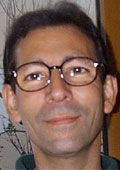 |
Rachid ALAMI
Rachid Alami is a senior research scientist at the Laboratoire
d'Automatique et d'Architecture des Systèmes, Centre National de la
Recherche Scientifique (LAAS-CNRS), Toulouse, France. He joined the
Robotics and Artificial Intelligence group at LAAS-CNRS
(http://www.laas.fr )in 1980. |
Abstract of the intervention : Task planning for Human-Robot InteractionHuman-robot interaction requires explicit reasoning on the human environment and on the robot capacities to achieve its tasks in a collaborative way with a human partner.This paper focuses on organization of the robot decisional abilities and more particularly on the management of human interaction as an integral part of the robot control architecture. Such an architecture should be the framework that will allow the robot to accomplish its tasks but also produce behaviors that support its engagement vis-a-vis its human partner and interpret similar behaviors from him. Together and in coherence with this framework, we intend to develop and experiment various task planners and interaction schemes. that will allow the robot to select and perform its tasks while taking into account explicitly the constraints imposed by the presence of humans, their needs and preferences. We have considered a scheme where the robot plans for itself and for the human in order not only to assess the feasibility of the task (at a certain level) before performing it, but also to share the load between the robot and the human and to explain/illustrate a possible course of action. Other(s) Author(s) : Aurelie CLODIC, Vincent MONTREUIL, Emrah Akin SISBOT, Raja CHATILA Download the PDF presentation : presentation n°81 |
|
